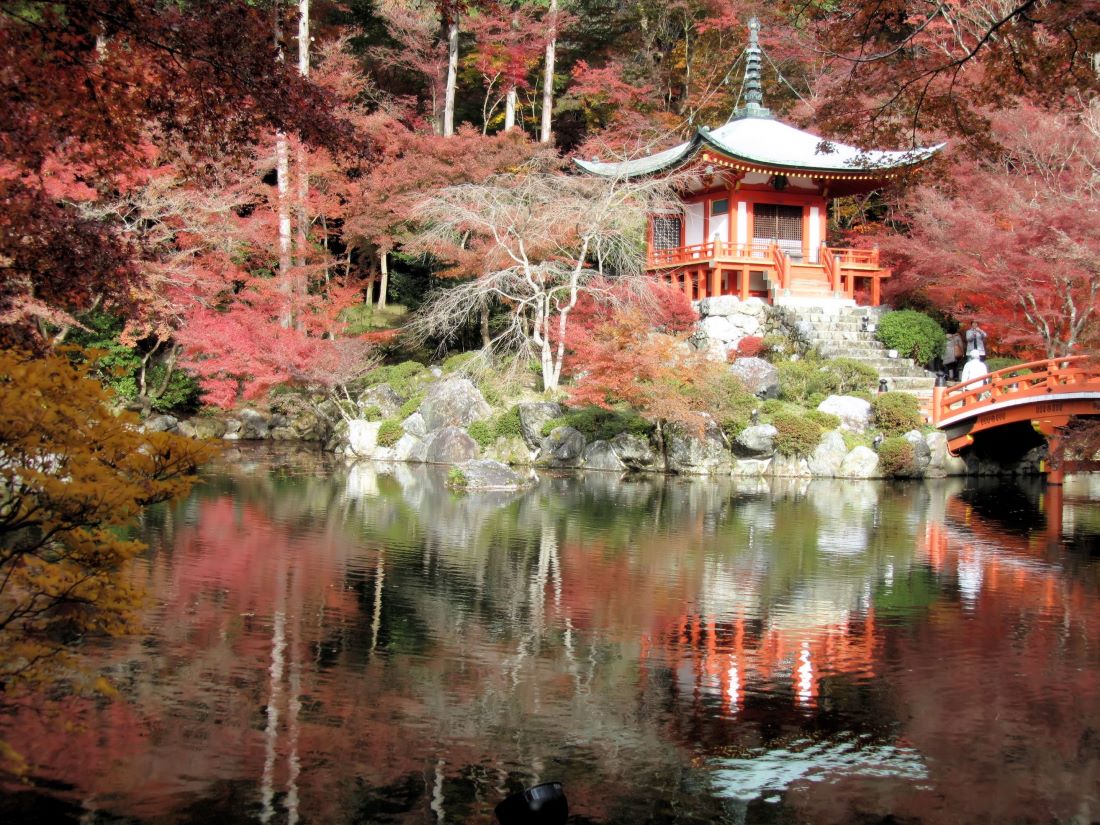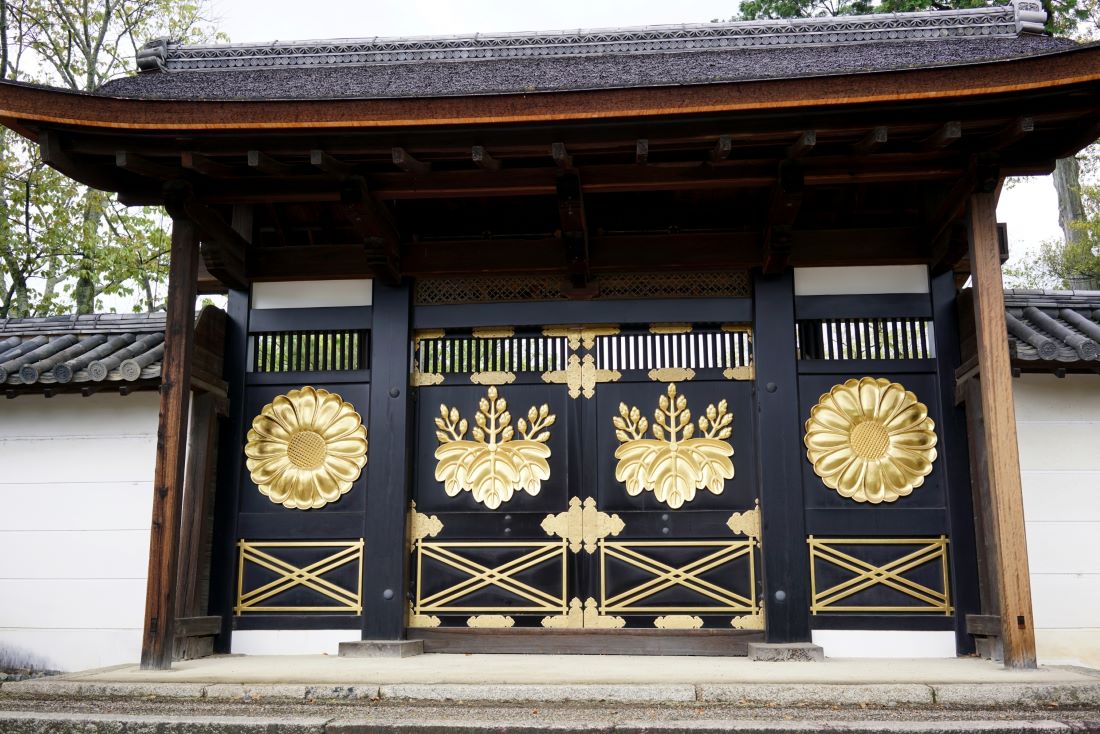Daigoji Temple is a magnificent Shingon Buddhist temple in Fushimi-ku, Kyoto, Japan. It is one of the oldest and most revered temples in Japan, with its origins dating back to the early Heian period.

The temple is dedicated to Yakushi, the Buddha of healing, and is famous for its stunning cherry blossoms that bloom in spring, making it a popular destination.
The temple is on the slopes of Mount Daigo, which gives you a stunning backdrop for the temple’s buildings and gardens.

You can take a leisurely stroll through the temple’s grounds, taking in the tranquil atmosphere and admiring the beautiful architecture and intricate details of the buildings. The temple’s main hall, the Godai Hall, is a designated National Treasure of Japan and is a must-see for anyone visiting the temple.
History

Daigoji Temple is a Shingon Buddhist temple complex in Kyoto, Japan. It was founded in 874 CE by the scholar monk Shobo, also known as Rigen Daishi.
The temple has a rich history and has been associated with the imperial family of Japan for centuries.
Origins

The origins of Daigoji Temple can be traced back to the 9th century when Emperor Saga, the 52nd emperor of Japan, ordered the construction of a temple on the site. The temple was named Daigo-ji, which means “temple on the hill.” The temple was built to protect the capital from evil spirits and to promote Buddhism in the region.
Shobo, the founder of Daigoji Temple, was a disciple of Kukai, the founder of the Shingon sect of Buddhism. Shobo was a renowned scholar and was known for his deep knowledge of Buddhist scriptures.
He was invited to Kyoto by Emperor Seiwa and was given the task of establishing a temple on the site of the old Daigo-ji.
Significant Events

Over the centuries, Daigoji Temple has been associated with many significant events in Japanese history. Emperor Daigo, the 60th emperor of Japan, entered Buddhist priesthood at the temple in 930 CE. He was buried on the temple grounds, and the temple was named after him.
The temple was also the site of the famous “Daigo no Hanami” cherry blossom festival, which was held during the Edo period. The festival was attended by the emperor and was a symbol of the power and prestige of the imperial family.

During the Meiji period, the temple was damaged by fire, and many of its buildings were destroyed. However, the temple was later restored, and today it is a designated UNESCO World Heritage Site.
Today, Daigoji Temple is one of the most important temples in Kyoto and is a popular destination for tourists and pilgrims alike. The temple complex includes buildings, including the main hall, the five-story pagoda, and the Reihokan Museum, which houses a collection of important Buddhist artifacts.
Architecture
Daigoji Temple is a stunning example of Japanese architecture, with its buildings and structures reflecting the periods of its history. Visitors are often in awe of the intricate details and grandeur of the temple.
Main Hall

The Main Hall, also known as the Kondo, is the central building of the temple complex. It was originally built in the early Heian period and has undergone renovations over the centuries.
The current building dates back to the early 16th century, and its design is a beautiful example of Momoyama architecture. The Main Hall houses the temple’s main object of worship, the Yakushi Nyorai statue. You can also admire the stunning ceiling paintings and intricate wood carvings inside the hall.
Pagoda

The five-story pagoda, also known as the Goju-no-to, is one of the oldest buildings in Kyoto, having survived the Onin War in the 1400s. It is at the foot of the mountain and is a prominent feature of the temple complex. The pagoda’s design is a mix of styles from different periods, including the Heian, Kamakura, and Edo periods. You can climb up to the top of the pagoda and enjoy the sweeping views of Kyoto.
Bell Tower
The Bell Tower, also known as the Shoro, is near the Main Hall. It is a two-story building that houses the temple’s bell, which is rung to mark the beginning and end of Buddhist services. The current bell was cast in the early 17th century and weighs over three tons. You can admire the intricate carvings on the wooden beams and pillars of the Bell Tower.
Overall, Daigoji Temple’s architecture is a testament to the skill and craftsmanship of Japanese builders and artisans over the centuries. You can admire the intricate details of the temple’s buildings and structures, and gain a deeper appreciation for Japan’s rich cultural heritage.
Art and Culture

Daigoji Temple is not only a religious site but also a cultural center that has played an important role in Japanese history. The temple has a rich collection of art and artifacts that showcase the country’s artistic heritage.
Important Artifacts
One of the most important artifacts at Daigoji Temple is the National Treasure, the Heike Nokyo, which is a Buddhist sutra that is said to have been written by the famous warrior Taira no Kiyomori. The sutra is decorated with gold and silver leaf, and its calligraphy is considered to be one of the most beautiful examples of Japanese writing from the Heian period.
The temple also has a collection of paintings and sculptures that date back to the Heian period. One of the most notable sculptures is the Yakushi Nyorai, which is a statue of the Buddha of Healing. The statue is made of wood and is said to have been carved by the famous sculptor Jocho.
Cultural Significance
Daigoji Temple has been an important cultural site for centuries. It has been the setting for many important events in Japanese history, such as the famous cherry blossom viewing party that was held by Toyotomi Hideyoshi, one of Japan’s most famous military leaders.
The temple has also been the subject of many works of art, including paintings, poems, and songs. The famous Japanese poet Matsuo Basho visited the temple and wrote a haiku about the cherry blossoms that bloom there: “The temple bell stops but I still hear the sound coming out of the flowers.”
Today, Daigoji Temple continues to be an important cultural site in Japan. You can explore the temple’s art and artifacts and learn more about the country’s rich cultural heritage.
Visiting Daigoji

Hours and Admission
Daigoji Temple is open daily from 9:00am to 5:00pm. Admission fees vary depending on the season and which parts of the temple you wish to visit.
During the spring and autumn seasons, when the temple’s gardens are particularly beautiful, the admission fee is higher. You can purchase a combined ticket for Sanboin, Reihokan, and Garan for 800 yen for adults and 600 yen for junior high school/high school students.
Admission to each individual building is also available for a lower fee. Children under elementary school age can enter for free.
Getting There
Daigoji Temple is in Fushimi-ku, Kyoto City. You can take the Tozai Subway Line to Daigo Station and then walk 15 minutes or take the community bus number 4 for 210 yen. Alternatively, you can take a JR train to Yamashina Station and transfer to the Tozai Subway Line. The journey takes around 30 minutes and costs 450 yen.
Tips for Visitors

The temple is on a hill, so visitors should also be prepared for some uphill walking. You can take a break at one of the many tea houses throughout the temple grounds. These tea houses offer traditional Japanese sweets and tea, and provide a lovely spot to relax and take in the beautiful scenery.
Visitors should also be respectful of the temple’s rules and customs. Shoes must be removed before entering any of the temple buildings, and photography is not allowed inside some buildings. Visitors should also avoid touching any of the temple’s artifacts or decorations.
Overall, Daigoji Temple is a beautiful and historic temple complex that is well worth a visit for anyone interested in Japanese culture and history. With its stunning gardens, traditional architecture, and peaceful atmosphere, it is a must-see destination for anyone visiting Kyoto.



